Clear blue skies, then puffy white clouds, then came the rain and hail. All that Mother Nature had planned for us only made the high mountain lakes and gorgeous wildflowers more amazing. We even had a critter say howdy as we hiked just outside of Yosemite National Park in the Tioga Pass area.
Where: Ansel Adams Wilderness, Inyo National Forest
Distance: 5.44 Miles
Difficulty: Moderate to Strenuous
Elevation Range: 9,653′ – 11,159′
Date: July 8, 2014
Maps: Falls Ridge and June Lake Topogs
We parked our car at the parking area at Tioga Lake, just east of the eastern entrance to Yosemite National Park, and I took a quick look in the direction that we would be headed. One teeny, tiny cloud was poking out on the edge of Mount Dana. The National Weather Service had a low confidence level on the rain possibilities, but was calling for 40% chance of rain for this day, mostly after 1100, but we weren’t worried about that. We had our rain gear packed but if we heard any rumbling of thunder, we were going to head back because we sure didn’t want to be up there in a lightning storm.

We headed up on the Glacier Canyon Trail, also known as the Dana Lakes Trail, entering the Ansel Adams Wilderness. Following along the Dana Fork, we spotted some wildflowers but our plan was to try and get up to the upper Dana Lake before the weather turned bad and we figured that we could take pictures on the way out. After topping out at our first rise, we looked to the north toward the Saddlebag Lake area and Mt. Conness. How pretty!

The heather was so bright and beautiful, especially the way it grew against old logs and rocks.

Looking toward our destination, we could see a few more clouds
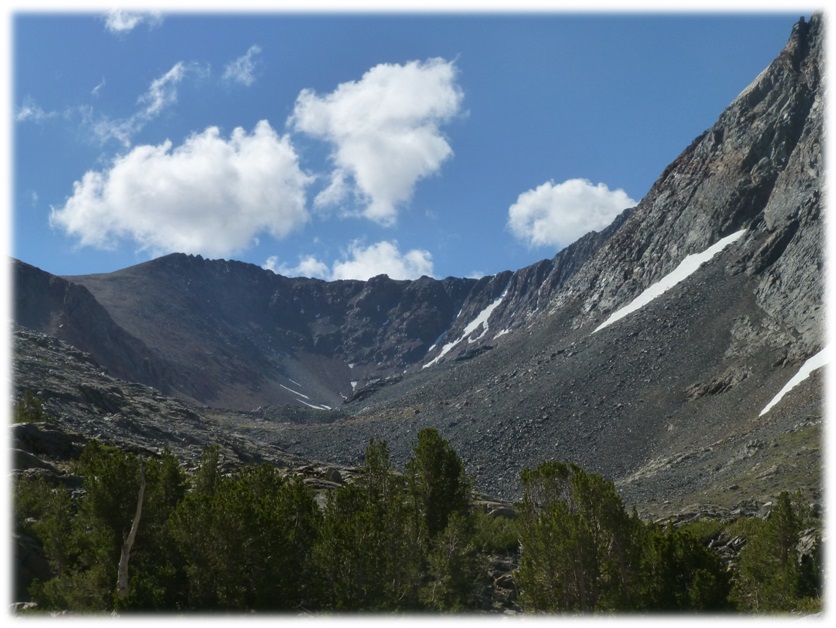 .
.
The clementine was absolutely the prettiest that I have ever seen it. The colors ranged from cream to light yellow to pinks.





A few more clouds were gathering around us but we sure loved the reflections that we saw of them in the lakes.


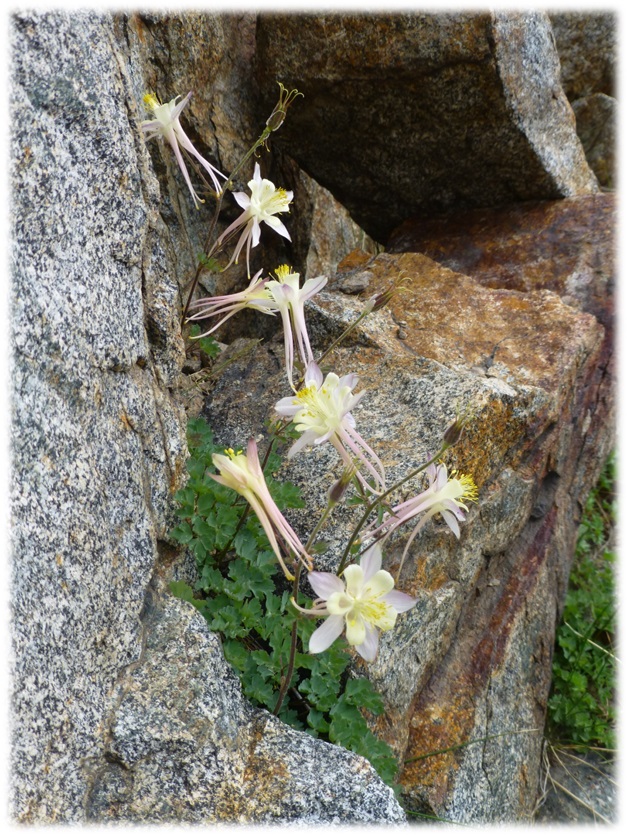


We headed around the first lake then up to the next one, negotiating boulders, large rocks and scree.

The second lake required a walk in the snow along the lake.

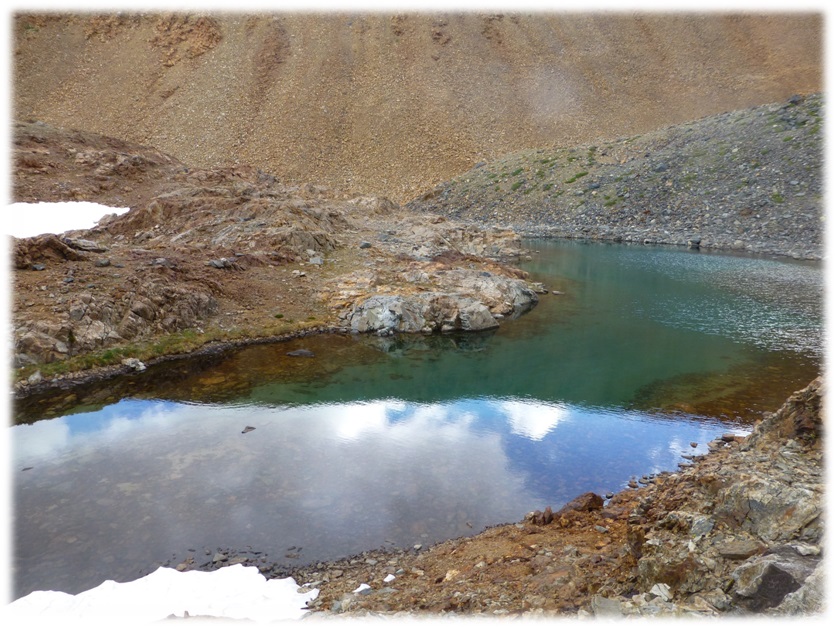
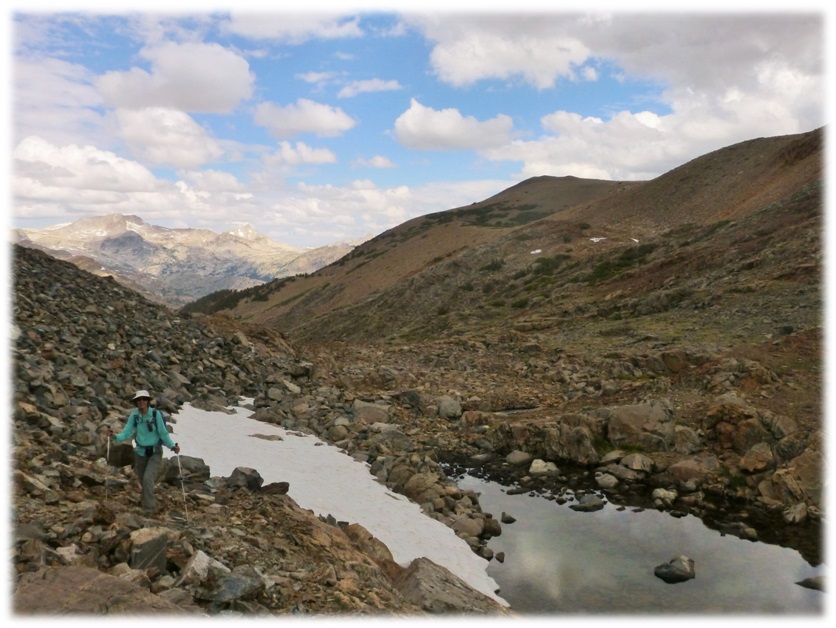
I came across a very unique rock. It almost looked like coral, the way it had porous parts to it. I wonder how and where this was formed. This debris field is what was left as the glaciers retreated from this area.


Just before we reached the top before dropping in the larger Dana Lake, we were welcomed back to the area by a local resident. This curious Marmot struck the same pose for the longest time, so I figured he must have just wanted his picture taken. He disappeared shortly after that was accomplished.


We reached the upper and largest of the Dana Lakes, just as it started to rain steadily. Mount Dana guards the southwestern corner of this lake. It is commonly known that Mount Dana reaches 13,061 feet tall, is the second highest mountain in Yosemite (after Mount Lyell) and is named after James Dwight Dana, who was a professor of geology at Yale College.
I wanted to learn a little bit more about him though. James Dwight Dana was born February 12, 1813 in Utica, Oneida Co., New York to James Dana and Harriet Dwight. James was the oldest child out of at least 10 children. James Dwight’s father, James, was a Merchant on the 1855 New York State Census and his brother William Buck was a lawyer.
You may not know that he graduated from Yale College in 1833, then set sail to the Mediterranean Sea as a teacher of midshipmen in the US Navy. When he returned to the United States, he attended the Yale Institute of Natural Science, where he studied mineralogy. In 1836 and 1837, he was an assistant to Professor Silliman in the chemistry lab at Yale. From 1838 until 1842, Dana sailed with the US Exploring Expedition, led by Captain Charles Wilkes.
The Expedition sailed around the world, mainly exploring the Pacific Ocean and the northwestern US around the Columbia River. The Expedition also discovered the Antarctic continent.
When the Expedition returned to the United States, James Dana spent the next thirteen years preparing his reports, which contained numerous sketches, maps and diagrams. Parts of these reports were published in the American Journal of Science and Art, the journal of which Dana later became joint and chief editor. Dana succeeded Professor Silliman as Professor of Natural History and Geology at Yale College, serving in this role from 1850 until 1892. He is responsible for much of the early knowledge of volcanoes, obtained from his time with the US Exploring Expedition and later trips to the Hawaiian Islands in the 1880s. His studies in Hawaii led him to theorize on the structure of continents and formation of islands.
His recognition of the linear pattern formed by the volcanic island chains was the first step toward the later theory of plate tectonics. Dana published over 200 papers and books on mineralogy, geology, zoology and volcanic studies, including his “Manual of Mineralogy” in 1848, which has been consistently reprinted and is still a standard college text today.
James Dwight Dana married Henrietta Frances Silliman, daughter of the Professor that he had worked for, June 5, 1844 in New Haven, Connecticut and they had at least 6 children, 2 of them dying young. James Dwight Dana (pictured) died January 18, 1895 and is buried beside his wife at the Grove Street Cemetery in New Haven, Connecticut.

I had hoped to walk along the edge of the upper lake to the inlet and when the rain started, we put on our rain jackets. It then started to hail and the rocks were getting slicker by the minute. The rain was coming down steady at the point when I was about half way there and we decided to turn around and get down before it got worse.

We did get some good views of the Dana Glacier from our vantage point.

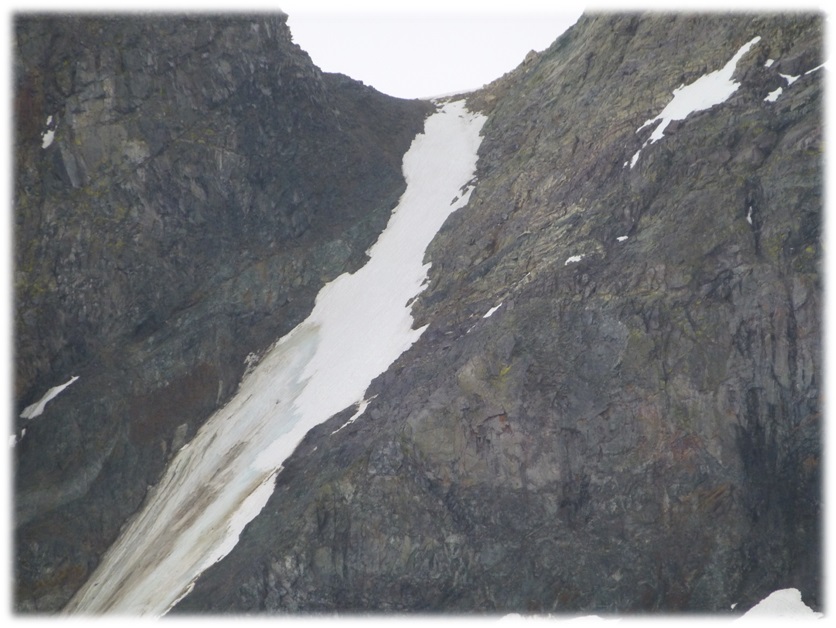
We started wandering back but decided to go back by some little lakes to the east of the larger lakes. At around 11:00, it started to hail steadily. As the hail was pelting our hands, it was starting to sting and get cold. I was mighty glad I had my light gloves in my pack and pulled them out and put them on.




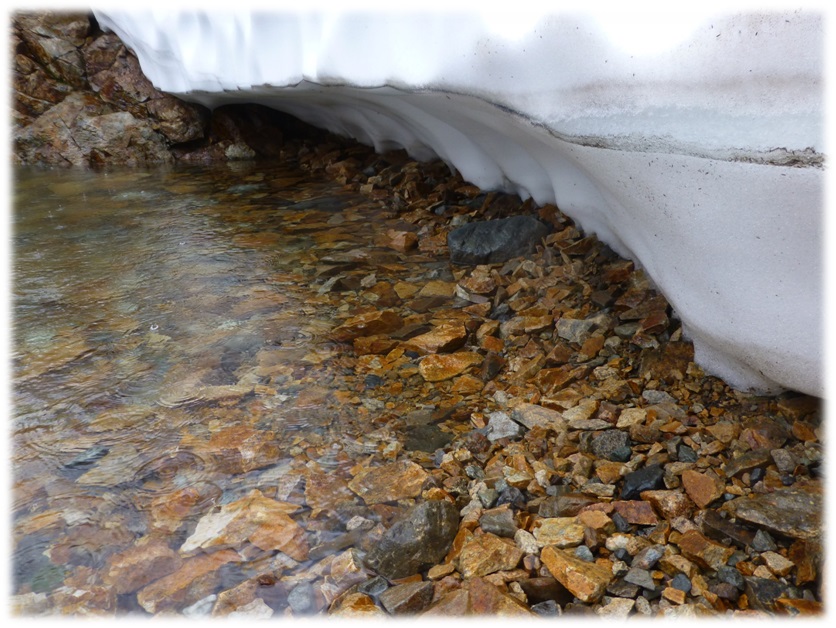


What a view with those clouds, blue sky and Mount Dana. We just had to take a picture.

Heading back down, we paid much more attention to the flowers along the way.

The raindrops on the plants and flowers caused us to take a closer look at the corn lilies.


We saw so many beautiful flowers, it was hard to remember them all. This one is my favorite. . . pennyroyal. It is a member of the mint family and smells so wonderful when you brush past it. The rain had really make that fragrance come alive.
 Wild onion was beginning to bloom.
Wild onion was beginning to bloom.


Even though the sky was mostly cloudy, we till had some pretty reflections as we passed by small tarns.

The purple lupine and vivid red paintbrush were gorgeous along the Dana Fork. It was even more special to hear the creek rolling by. Take a listen

Little elephant heads. If you look very closely at the detail of this flower, you can see those “elephants.”


Penstemon


I think this might be Cinquefoil.

Wooly mule ears

Ranger buttons

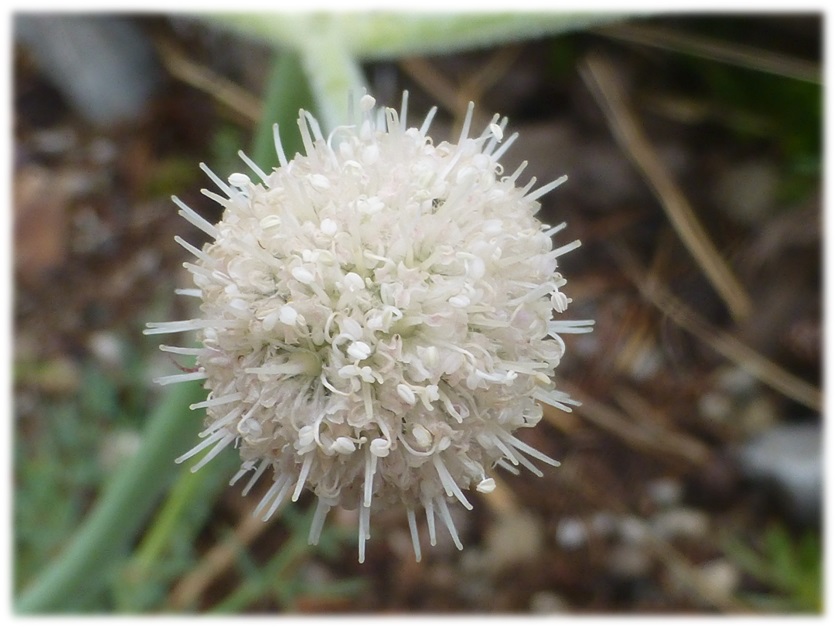
Crimson columbine


Aster

We were blown away by the Clementine. I am still in awe at how many there were and what beautiful blooms they had. Even if hiking up to Dana Lakes or Dana Plateau isn’t your cup of tea, the wildflower display toward the first part of the trail along the Dana Fork is just starting up and is glorious on its own.

Sources:
http://en.wikipedia.org/wiki/James_Dwight_Dana
Day Hikes in the Tioga Pass Region, John Carroll O’Neill & Elizabeth Stone O’Neill, 2002
Census of the state of New York, for 1855. Microfilm. New York State Archives, Albany, New York
http://www.findagrave.com/cgi-bin/fg.cgi?page=gr&GSln=dana&GSfn=james&GSmn=dwight&GSbyrel=all&GSdyrel=all&GSst=8&GScnty=308&GScntry=4&GSob=n&GRid=110856256&df=all&




